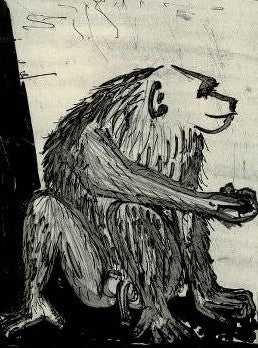Histoire Naturelle

Pablo Picasso's portfolio titled Buffon's L'Histoire Naturelle is a series of 31 etched plates with sugar-lift aquatint and drypoint. In 1936, Picasso was commissioned by Vollard for a suite of etchings to illustrate texts from the Count of Buffon's 18th century text. Accordingly, Picasso selected thirty-one descriptions of animals from the Histoire Naturelle of George-Louis Leclerc, comte de Buffon as a point of departure for these etchings. Twenty-one of which are accompanied by Buffon's abbreviated texts, and the remainder are accompanied only by his titles.
At the time, the master printer Roger Lacouriere had just introduced Picasso to the technique of lift-ground aquatint: this involves coating a copper plate with a sugar-water solution, working the plate with aquatint, and then soaking the plate to dissolve the sugar ground and lighten the surface of the plate. Picasso was eager to try out this new printing method, which allowed a variety of tones and textures within a limited range; specifically, it allowed the artist to work in a wide range of grays between etchings's black and white. It appears that Picasso executed them quite rapidly, having produced 32 plates between 1936 and 1937. The spontaneity and freedom with which Picasso created the plates is evident by the freehand margins, the use of fingerprint for textual variety, and the rapidly drawn lines.
Though the plates were printed in 1937, the sudden and untimely death of Vollard in 1939 due to an automobile accident delayed their being published until 1942, when Vollard's associate Martin Fabiani brought them out . The portfolio was published, by Fabiani, in an edition of 226 copies (including 36 copies on various papers containing a separate suite of the prints with remarques, 55 copies on Montval wove, and 135 copies on Vidalon wove watermarked "Ambroise" or "Vollard"). In the proofing stages, Picasso etched the name of each animal- except the wolf- in large letters beneath the image; however, these names were removed in their final state. The portfolio has been called one of the masterpieces of the twentieth century, and it is all the more remarkable when one remembers that it was produced during the dark days of the German occupation of Paris, a time of severely restricted artistic freedom.

